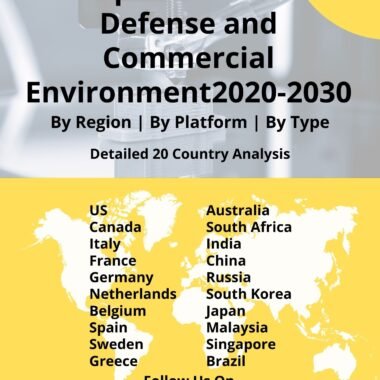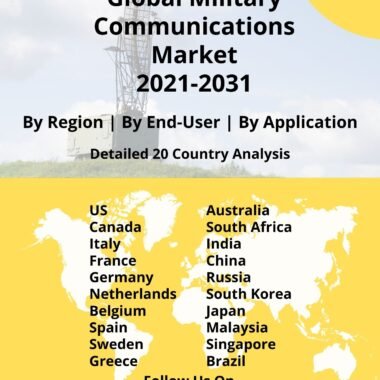Description
Submarine Rescue Market
Frequently Asked Questions of Submarine Rescue Systems Market
Submarine Rescue Systems are the pinnacle of subsea engineering, providing submariners with a vital lifeline in emergency scenarios. Submariner Free Accent Recovery from surface-supporting DISSUB Ventilation and Recompression, Transfer Under Pressure Decompression Arrays (TUP, subsea Remotely Operated Vehicles (ROV), free swimming Submarine Rescue Vehicles (SRV), and Atmospheric Diving equipment plays an important role in submarine operational safety. Various escape infrastructures are installed within the submarine to enable a way of Free Accent or a capability of Transfer Under Pressure (TUP) via a rescue vehicle for the rescue of the submariners. TUP Systems are provided with Submarine Rescue Vehicles (SRV) for the safe transfer of DISSUB occupants to a ship-based decompression complex.
The distressed submarine (DISSUB) requires a quicker response to its distress in order to detect, communicate, and maintain life on board before the TUP Rescue Vessel can be mobilized and arrive on site. A Vessel of Opportunity (VOO) with an installed ROV with Emergency Life Support Stores (ELSS), an Atmospheric Diving Suit (ADS) or equivalent Diving System, and a Submarine Emergency Ventilation and Decompression System (SEVDS) are used for this.
The Submarine Emergency Ventilation and Decompression System (SEVDS) is a surface-supplied, umbilical-linked system designed to keep a distressed submarine (DISSUB) alive. The system will continuously monitor and control the DISSUB’s atmospheric conditions by sampling and analyzing the contents of the DISSUB to determine the required atmosphere control methods, which include exhausting the contents, supplying breathing air from the surface to the DISSUB to stabilize levels of oxygen and carbon dioxide, flushing contaminated atmospheres, managing the submarine’s internal pressure, and maintaining a safer environment. The system may be quickly installed at the DISSUB’s location and connected to the submarine by ROV and ADS.
Deep Submergence Rescue Vehicles (DSRVs) are small, specialized submarines that are designed to rescue submarine crews. DSRVs are equipped with manipulator arms that can be used to attach to a submarine, and they have life support systems that can sustain a crew for several days. Remotely Operated Vehicles (ROVs) are uncrewed vehicles that are controlled by operators on the surface. ROVs can be used to survey the area around a submarine, and they can also be used to deliver supplies or to perform rescue operations. Transfer Under Pressure (TUP) systems are used to decompress submarine crews after they have been rescued. TUP systems are essentially large chambers that are pressurized to the same level as the submarine. The rescued crew members are then transferred to the TUP system, where they can be slowly decompressed.
Major factors driving Submarine Rescue Market Growth
The growth of the market is driven by factors such as increasing defense spending, technological advancements in submarine rescue, and the rise of regional conflicts.
Trends Influencing the Submarine Rescue Market Size
The submarine rescue market key players are constantly developing new and innovative submarine rescue vessels to meet the changing needs of the military. This includes the development of new types of submarine rescue vessels, such as larger and more capable DSRVs, and ROVs with enhanced capabilities. The military is increasingly focusing on automation in submarine rescue. This is driven by the need to reduce the risk of human error during rescue operations.
Submarine Rescue Market Forecast & Dynamics
These are just a few of the most common submarine rescue systems. Several other systems are also used, and the specific system that is used will depend on the circumstances of the rescue. Advanced sonar systems can be used to locate submarines that are in distress. Robotic systems can be used to perform rescue operations without the need for human intervention. These technologies are still in development, but they have the potential to revolutionize submarine rescue.
Submarine Rescue Market Analysis for Recent Developments
Last September, JFD, part of James Fisher and Sons plc, supported a highly successful Flying Fish exercise, a NATO Submarine Rescue System (NSRS) aircraft loading evolution, with the US Air Force. The drill was held at Royal Air Force Mildenhall in Suffolk to check that submarine rescue system equipment could be loaded and delivered by the US Air Force’s C5 Super Galaxy aircraft type in the event of a submarine rescue operation. In an uncertain future, developing air mobility options for submarine intervention and rescue operations is vital. Delays in a rescue mission could be disastrous, hence different aircraft types must be able to transport the equipment and provide a rapid reaction to the submarine emergencies. Because the C5 aircraft is similar in capacity and range to the NSRS’ other principal carrier, the Antonov AN124, this Flying Fish exercise has substantially expanded the choices for NSRS air movement. The availability of the AN124 fleet had been questioned owing to the conflict in Ukraine, so proving the C5’s feasibility as an alternative NSRS carrier was viewed as a very beneficial augmentation to the system’s air mobility by the NSRS participant nations.
Global submarine rescue capabilities have seen significant advancements, ensuring the safety and well-being of submariners in emergencies. Collaborative efforts among nations and organizations have resulted in the development of state-of-the-art technologies and protocols for swift and effective submarine rescue operations. Specialized rescue vessels equipped with advanced submersibles and remotely operated vehicles (ROVs) are strategically positioned around the world to respond rapidly to submarine emergencies. These vessels are equipped with cutting-edge sonar systems and communication tools, enabling them to locate and establish contact with distressed submarines even at extreme depths.
In addition to technological innovations, international agreements and coordinated training exercises have improved the interoperability of submarine rescue teams. These efforts aim to create a seamless global network capable of responding to emergencies in any part of the world’s oceans. The emphasis on rapid response, coupled with improved communication and coordination, signifies a commitment to the safety of submariners and the prevention of catastrophic incidents. The evolution of global submarine rescue capabilities in 2023 reflects a shared dedication to maritime safety and underscores the importance of international cooperation in addressing challenges beneath the ocean’s surface.
Key Companies





